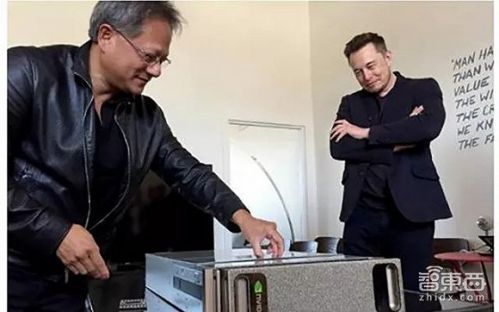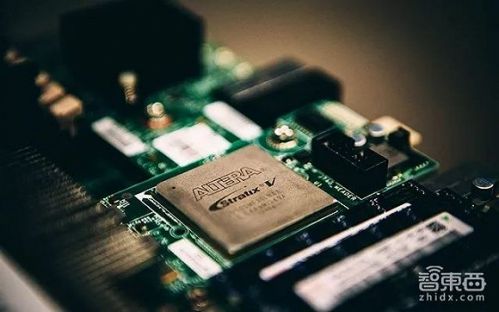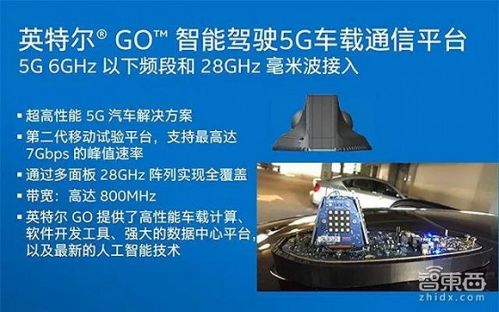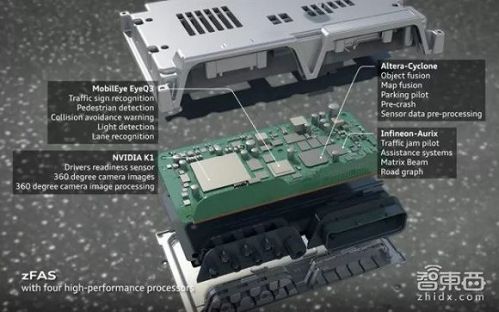Recently, Tesla and AMD announced a collaboration in the development of autonomous driving chips, sparking speculation about whether Tesla’s partnership with NVIDIA had changed. At GTC China, NVIDIA CEO Huang Renxun stated that even if Tesla used other computing chips, he would still buy a Tesla car. Let's take a closer look at this story with our automotive electronics editor.
The computing chip, often referred to as the brain of self-driving technology, has once again taken center stage. Although Groffont, who accidentally leaked the "fake news," denied it, the widespread concern among industry insiders highlights just how critical the chip is for autonomous driving companies.
Major players like NVIDIA, Intel, and Qualcomm, along with long-standing semiconductor suppliers and emerging startups focused on niche technologies, are all vying to develop their own autonomous driving chips. The goal is to dominate the future of self-driving technology.
1. Is Tesla’s “searching for new love†fake?
Last week, GlobalFoundries (GF), a foundry previously part of AMD, inadvertently revealed that Tesla, AMD, and GF were working together on autonomous driving. The news quickly spread, causing a stir in the autopilot community. AMD’s stock price rose, while NVIDIA’s fell slightly.
According to reports, Tesla plans to develop its own autopilot chip based on AMD’s chip IP, with GF acting as the foundry. However, the next day, GF denied any direct collaboration with Tesla, carefully avoiding the word "direct." Both Tesla and AMD have remained silent—neither confirming nor denying the claims.
Tesla wouldn’t admit it for several reasons:
- Tesla’s current models already use NVIDIA’s Drive PX 2 system for self-driving.
- Tesla Model S and Model X are still parked in NVIDIA CEO Huang Renxun’s garage.
- NVIDIA recently sent Musk-funded OpenAI a DGX-1 deep learning system, or personally handed it over.

But from Musk’s past behavior, it’s clear he doesn’t always play nice. His split with Mobileye was a painful lesson, and now NVIDIA is caught off guard. However, Tesla’s ultimate goal is much bigger than just one chip company.
There are three main reasons why Tesla wants to develop its own autonomous driving chip:
- Greater control over core hardware.
- Developing proprietary hardware can create a competitive edge in autonomous driving tech.
- The current Drive PX 2 consumes 250W and costs $15,000. A custom chip could significantly reduce costs at scale.
Therefore, for better hardware control, stronger computational power, and cost efficiency, developing an in-house autopilot chip makes sense for Tesla.
The most direct evidence is that Tesla has a chip team of over 50 people, led by Jim Keller, who joined last year. Keller worked at AMD, where he helped create the X86-64 architecture and the K8 processor. He later moved to Apple, designing the A4 and A5 chips, and returned to AMD to work on the Zen architecture, which powered the Ryzen line, forcing Intel to rethink its strategy.

With such a legendary figure leading the effort, Tesla is clearly serious about its chip ambitions.
Last week, during a talk at GTC China, Huang Renxun was asked if he would still buy a Tesla if they developed their own autopilot chips. He didn’t immediately deny the possibility, showing some level of confidence in his position.
This time, with Groffont involved, it suggests that Tesla’s autopilot chip is at least in the tape-out phase. However, Tesla is unlikely to challenge NVIDIA’s GPGPU in deep learning, so this chip will likely be a dedicated autonomous driving solution.
Second, the battle among three giants in the autopilot chip market
The Tesla-NVIDIA relationship is just the tip of the iceberg in the broader race for autonomous driving chips. In this crucial area, different companies are pursuing various hardware approaches—GPU, FPGA, ASIC—to support the growing demand for AI-powered driving systems.
Among them, Intel, NVIDIA, and Qualcomm stand out as the three major players, each representing a different technical path in the autonomous driving chip space.
1. Intel: Spending $32 billion to buy a day
Over the past two years, Intel has been struggling in the deep learning space. While CPUs excel in general-purpose tasks, GPUs have dominated in parallel computing required for AI. To catch up, Intel acquired Altera, the second-largest FPGA company, for $16.7 billion in 2016.

(Altera FPGA chip)
FPGA chips sit between CPUs, GPUs, and ASICs. Unlike general-purpose processors, FPGAs are more specialized and closer to I/O operations. Once programmed, they can perform specific tasks efficiently, making them ideal for real-time applications like autonomous driving. They’re also more flexible than ASICs, allowing for reprogramming as needed.
Intel uses FPGAs in its Intel Go platform, and Audi’s A8 relies on Altera’s FPGA-based zFAS for advanced driver assistance. Intel also acquired Movidius for computer vision capabilities, enhancing its autonomous driving offerings.
Additionally, Intel has a strong presence in the server market, enabling it to provide cloud-based computing power. Combined with low-latency FPGAs, it can handle massive real-time data processing, which is key for smart city visions where vehicles communicate with central hubs.
However, building such a system requires significant investment in infrastructure and standards, which may take time. For now, Intel is focusing on assisted driving solutions.
In 2016, Intel released the A3900 series of Atom processors for ADAS, offering support for in-car systems and driver assistance features. These chips are designed to withstand extreme temperatures and consume only 12W, making them ideal for automotive environments.
Despite the competition, Intel made a bold move by acquiring Mobileye for $15.3 billion. This acquisition gave Intel access to Mobileye’s dominant EyeQ chips, which power many ADAS systems. With this, Intel now offers a full stack of solutions: Atom/Xeon + Mobileye + Altera FPGA.

(The EyeQ3 chip in the yellow circle)
Mobileye is now preparing to release the EyeQ5, which is expected to support L4-L5 autonomy. As vehicle-to-cloud communication remains limited, on-board computing power is still essential.
2. NVIDIA: Ecosystem, Performance, Riding the Dust
NVIDIA has undoubtedly benefited the most from the AI revolution. Its GPU dominance in deep learning is well-established, with most training done using NVIDIA’s GPUs. This is due to their superior parallel computing performance and ease of use for developers.
At GTC, Huang Renxun introduced TensorRT 3, an updated deep learning platform supporting multiple frameworks. NVIDIA’s approach to vehicle-side AI inference is simple: more floating-point performance equals better results.
Before the rise of autonomous driving, NVIDIA entered the automotive market through its Tegra processors, partnering with brands like Audi and Tesla. However, Tegra was primarily used for in-car entertainment. Recently, Tesla replaced its infotainment supplier with Intel, signaling a shift in the market.
This year’s Audi A8, featuring Level 3 autonomy, uses NVIDIA’s Tegra K1 for image processing. But the main chip responsible for the autopilot function is Mobileye’s EyeQ3 and Altera’s Cyclone. While NVIDIA has a presence, it’s not yet the leader in this space.

(zFAS’s four main computing chips)
Although NVIDIA has a strong ecosystem and high-performance GPUs, the road to full autonomy is still long. The competition is fierce, and every player is trying to secure a foothold in the future of self-driving technology.
[1] [2] [3]

Fiber Fast Connector,Fiber Quick Connector,Fast Connect Fiber Connectors,Fiber Optic Quick Connector
Ningbo Fengwei Communication Technology Co., Ltd , https://www.fengweicommunication.com